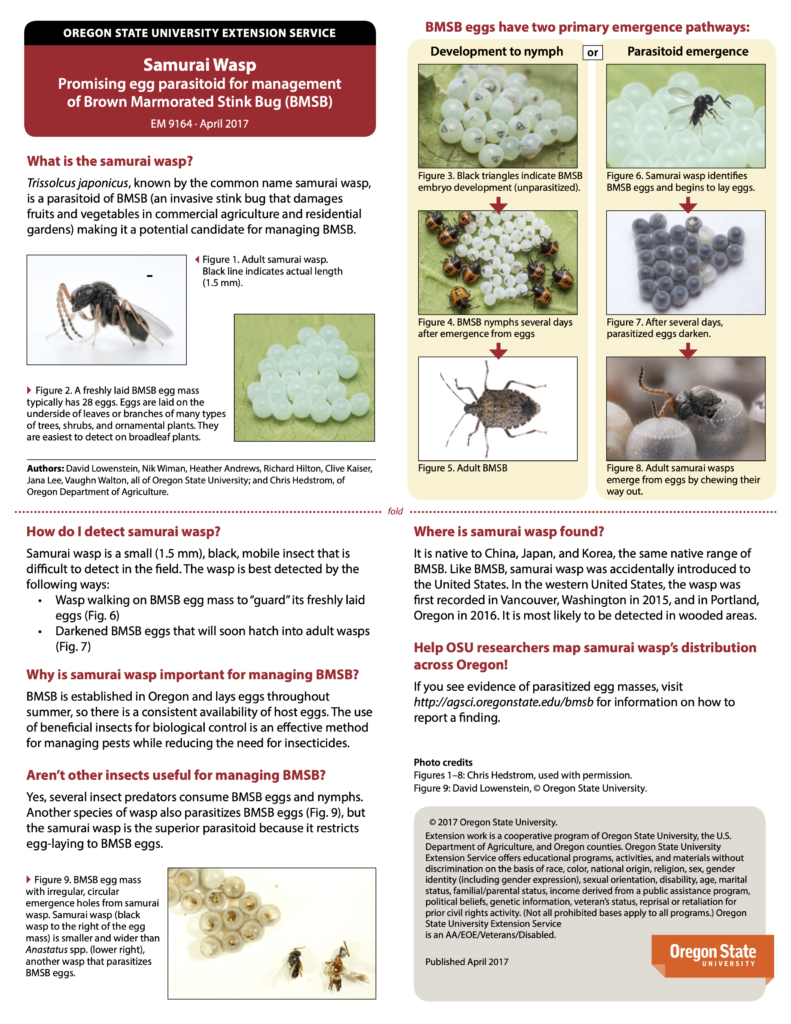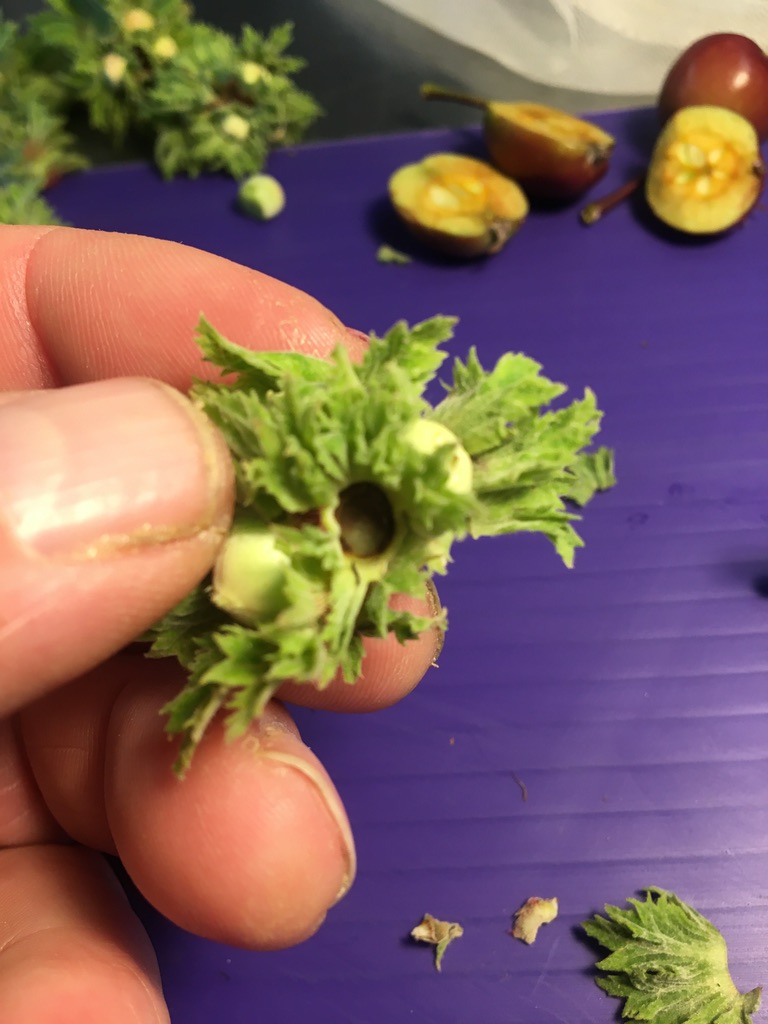


Brown marmorated stink bug (BMSB, Halyomorpha halys) is a direct pest of hazelnuts across its invaded range worldwide including in the Pacific Northwest. Our program began redistribution efforts of the biological control agent Trissolcus japonicus soon after it was discovered attacking egg masses of BMSB in Portland in 2015. Since our initial efforts, the ODA has begun ramping up the wasp releases and they are putting out some impressive numbers. Our sampling is showing that at many sites evidence of the wasp can be found year after year, suggesting it is well-established in some but not all areas of the Willamette Valley and more broadly across Oregon.
The very first BMSB egg mass that I found this season was parasitized by the wasp – a very good sign. We have a lot of information about this wasp posted and we continue to encourage reporting of parasitized egg masses. There is little doubt that successful biological control of BMSB is the best option for management for this pest that is found across the landscape.
Regardless of the improving levels of biological control, this insect remains a threat to the hazelnut industry. It is likely that we will continue to experience kernel damage from this pest into the future, though it seems the populations are highly variable year to year. Last year (2021 growing season) the BMSB populations were low and processors reported minimal damage. However, in the previous year (2020), there was considerable damage. The environment has a lot to do with these population fluctuations. This pest is also highly variable spatially. Many orchards get no pressure.
We have been trapping adults all spring and I have seen adults in the orchard on several occasions. Last week I saw second instar nymphs in the orchard on nut clusters. This Monday the 18 of July we encountered an egg mass that had just hatched in an orchard where we have a filbertworm trial.
Previous work has shown that hazelnut damage increases at the time the nymph population increases. So it is a good time to scout for BMSB. We hope to further refine trap captures help growers determine if management is necessary.
BMSB management info is found in EM8328, the Hazelnut Pest Management Guide.










